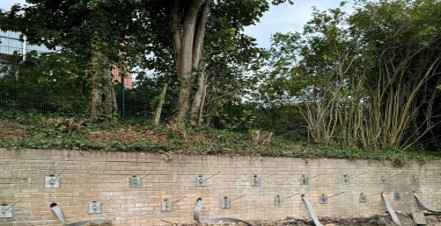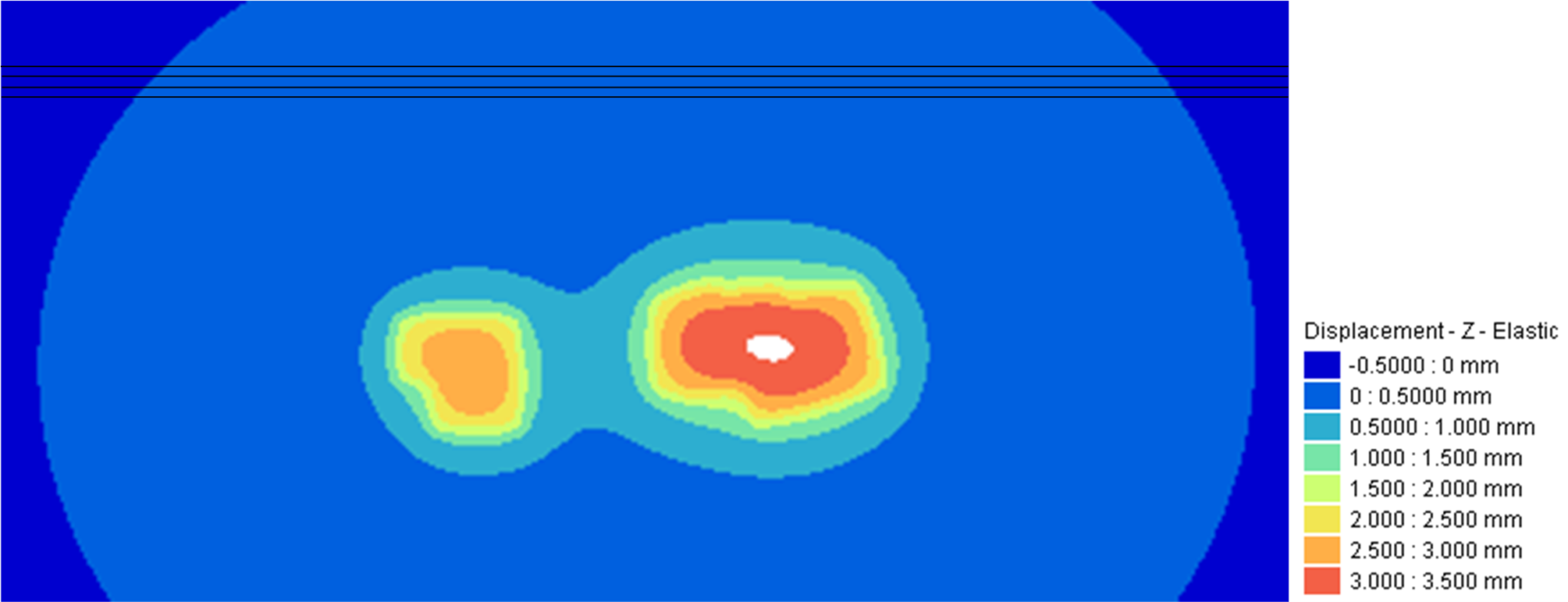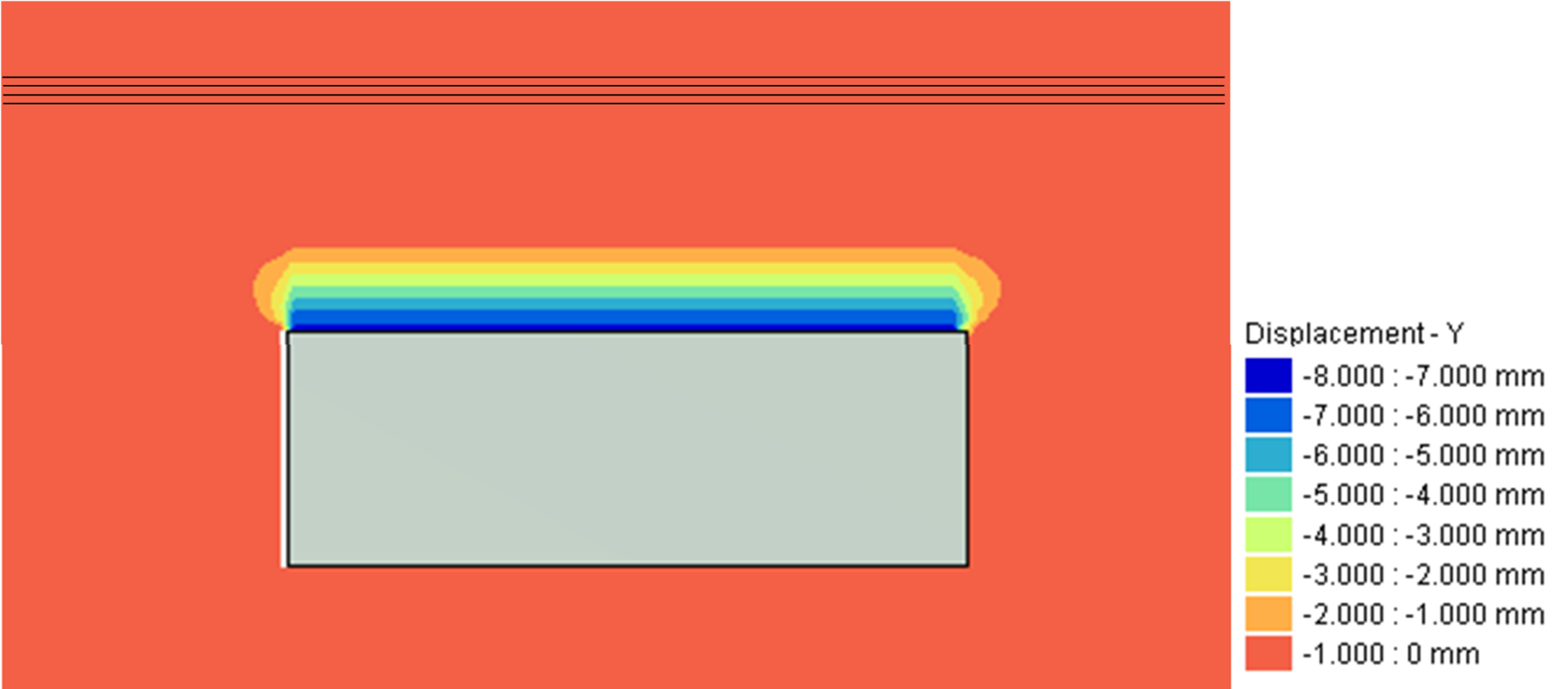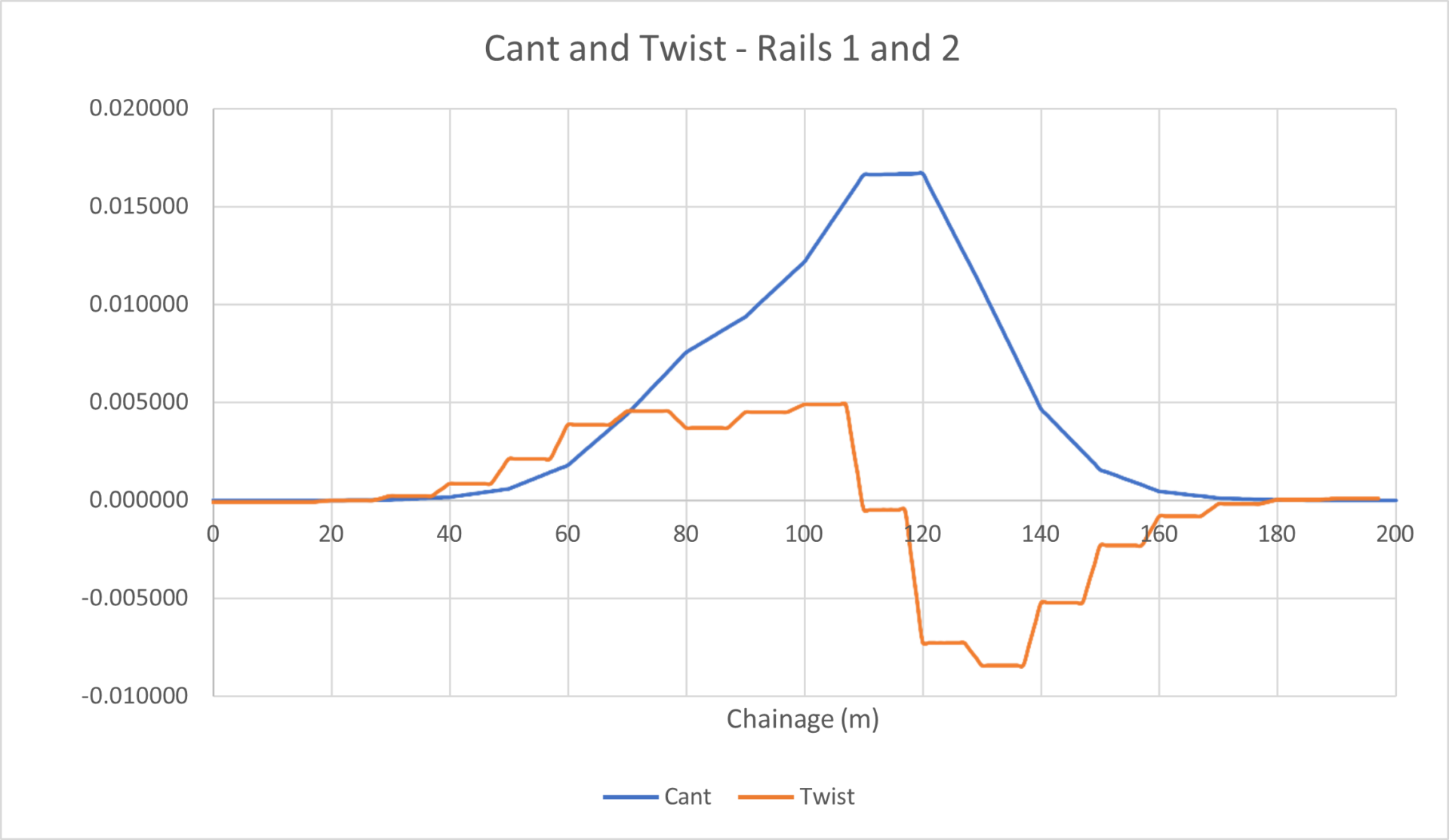Software Used on this Project
Project Overview
Ground movement assessments are crucial in ensuring the safety and stability of construction projects, especially when close to sensitive infrastructure. In the White House Bristol project, IBEX Consulting Engineers faced the challenge of transforming the site by demolishing an existing structure and constructing two new three-storey buildings. The engineers used Oasys PDisp and Oasys XDisp for ground movement assessment caused by the construction.
The site, covering approximately 0.6 hectares, was adjacent to a railway embankment. The development plan included the installation of S8 anchors in a failing brick retaining wall to stabilise it. This wall, leaning precariously towards the railway, required careful handling to prevent any impact on the railway tracks. The new buildings, Block A and Block B, were to be supported on 450mm diameter reinforced concrete bearing piles, necessitating temporary excavations up to 1.9 meters deep. Given these challenges and the site’s proximity to Network Rail railway tracks, it was imperative to utilise advanced tools and techniques to ensure that the construction activities would not compromise the stability of the nearby railway infrastructure.

How Oasys proved invaluable
To tackle the complexities of this project, the team turned to advanced ground movement and utility damage assessment software, Oasys PDisp and Oasys XDisp. These programs were instrumental in modeling and analysing the potential ground movements induced by the construction activities. The team needed to assess the vertical and horizontal displacements of the soil to ensure that the railway tracks would remain unaffected.

PDisp was used to evaluate the vertical ground movements resulting from the unloading and reloading processes. The engineers were able to model the effects of excavation and construction loading on the ground, providing a conservative estimate of ground movements by considering greenfield conditions. PDisp assisted in assessing the vertical displacement of the soil body due to excavation and long-term loading, ensuring that the foundation work would not destabilize the surrounding area.
 Vertical (downwards) displacement of the soil body from application of the proposed building loading
Vertical (downwards) displacement of the soil body from application of the proposed building loading
XDisp was used for more detailed analysis of ground movements, including both horizontal and vertical displacements. The engineers simulated the three-dimensional ground movement field induced by the construction activities. They found XDisp particularly valuable in assessing the impact on the nearby railway tracks by calculating differential settlements, can’t, and twist. The visual representations of ground movement contours and displacement fields provided by XDisp were crucial in understanding the potential effects on the railway infrastructure.
 Vertical (upwards) displacement of the soil body from unloading
Vertical (upwards) displacement of the soil body from unloading
 Horiztonal displacement due to excavations and construction activities
Horiztonal displacement due to excavations and construction activities
The results of the analysis were reassuring. The maximum track settlement was found to be less than 1mm, with minimal impact on track, cant, and twist. The analysis showed that the proposed development would have a negligible influence on the railway tracks, ensuring safety and stability. This outcome was a testament to the effectiveness of Oasys software in providing detailed, accurate, and conservative assessments of ground movements.
 Cant and twist for tracks 1 and 2 – B2
Cant and twist for tracks 1 and 2 – B2
The Whites House ground movement assessment project highlighted the critical role of advanced geotechnical software in modern construction projects. The use of PDisp and XDisp enabled the project team to proceed with confidence, knowing that their development would not compromise the integrity of the nearby railway infrastructure. This case study underscores the importance of thorough planning and precise analysis in ensuring the success of complex engineering projects.
We’d like to thank IBEX Consulting Engineers for sharing this work with us.
To learn more about how to implement Oasys XDisp and Oasys PDisp into your ground movement assessment projects, contact us today at [email protected] or visit the ground movement solutions page to find out more.
Want to learn more about how automated workflows can help improve your projects? Read our linked in article ‘Why taking a digital approach for your Ground Movement Assessment projects is the way forward: Streamlining utilities HS2 Euston Station project’ here.
